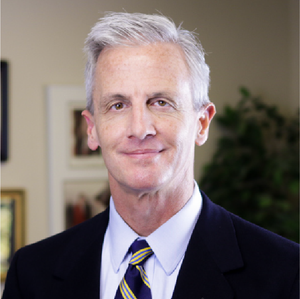Education
Brandon Dutcher | March 4, 2016
The $7,000 Teacher Pay Raise That Wasn’t
Brandon Dutcher
Oklahoma’s public education system now employs more non-teachers than teachers.
That was one of the many noteworthy facts presented by economist Benjamin Scafidi yesterday at a presentation at OCPA. Dr. Scafidi (Ph.D., University of Virginia) is Professor of Economics at Kennesaw State University. He has served as an expert witness for the state of Georgia in school funding litigation.
.png)
Using data that the Oklahoma State Department of Education reports to the U.S. Department of Education (USDE), Scafidi shows that Oklahoma's growth in non-teaching staff has far outpaced student growth over the last two decades. If Oklahoma had increased non-teaching staff at the same rate as its increase in students, the annual recurring savings would amount to enough to give every Oklahoma teacher a $7,042 pay raise. His entire PowerPoint presentation is available here.
Representatives of Oklahoma’s public education community sometimes claim that administrative costs are under control because those costs are limited by statute. Education researcher Greg Forster has already tackled that argument (“Yes, Oklahoma, There Is Bloat In Public Schools”) by relying on USDE definitions for categories of spending which allow for valid comparisons among the 50 states. Scafidi’s research reinforces Forster’s point.
When pressed, those in the education community will sometimes acknowledge the growth in non-teaching overhead but will place the blame on federal or state mandates. But if mandates from on high were to blame, Scafidi says, we would expect to see fairly uniform non-teaching-staff growth rates across school districts. Alas, we do not. To their credit, some districts (Deer Creek and Foyil, for example) prioritized the hiring of teachers over non-teachers between fiscal years 1993 and 2014. But consider:
- In Tulsa, enrollment decreased by 3 percent and the number of teachers decreased by 4 percent. But non-teaching staff increased by 147 percent.
- In Ada, enrollment increased by 6 percent and the number of teachers increased by 21 percent. But non-teaching staff increased by 48 percent.
- In Tahlequah, enrollment increased by 5 percent and the number of teachers increased by 7 percent. But non-teaching staff increased by 91 percent.
- In Sand Springs, enrollment decreased by 2 percent and the number of teachers decreased by 13 percent. But non-teaching staff increased by 14 percent.
- In Tulsa Union, enrollment increased by 49 percent and the number of teachers increased by 50 percent. But non-teaching staff increased by 150 percent.
- In Jenks, enrollment increased by 38 percent and the number of teachers increased by 42 percent. But non-teaching staff increased by 76 percent.
- In Midwest City-Del City, enrollment decreased by 7 percent and the number of teachers decreased by 4 percent. But non-teaching staff increased by 82 percent.
- In Clinton, enrollment increased by 13 percent and the number of teachers decreased by 2 percent. But non-teaching staff increased by 41 percent.
Staffing information for each of Oklahoma school districts is available here. (In addition, useful information about student-teacher ratios is available here.)
Understandably, some in the education community are not pleased with Scafidi’s work and have offered criticisms. Scafidi answers the critics here.
[Editor’s note: Information for individual districts added on 3/30/16.]

Brandon Dutcher
Senior Vice President
Brandon Dutcher is OCPA’s senior vice president. Originally an OCPA board member, he joined the staff in 1995. Dutcher received his bachelor’s degree in political science from the University of Oklahoma. He received a master’s degree in journalism and a master’s degree in public policy from Regent University. Dutcher is listed in the Heritage Foundation Guide to Public Policy Experts, and is editor of the book Oklahoma Policy Blueprint, which was praised by Nobel Prize-winning economist Milton Friedman as “thorough, well-informed, and highly sophisticated.” His award-winning articles have appeared in Investor’s Business Daily, WORLD magazine, Forbes.com, Mises.org, The Oklahoman, the Tulsa World, and 200 newspapers throughout Oklahoma and the U.S. He and his wife, Susie, have six children and live in Edmond.